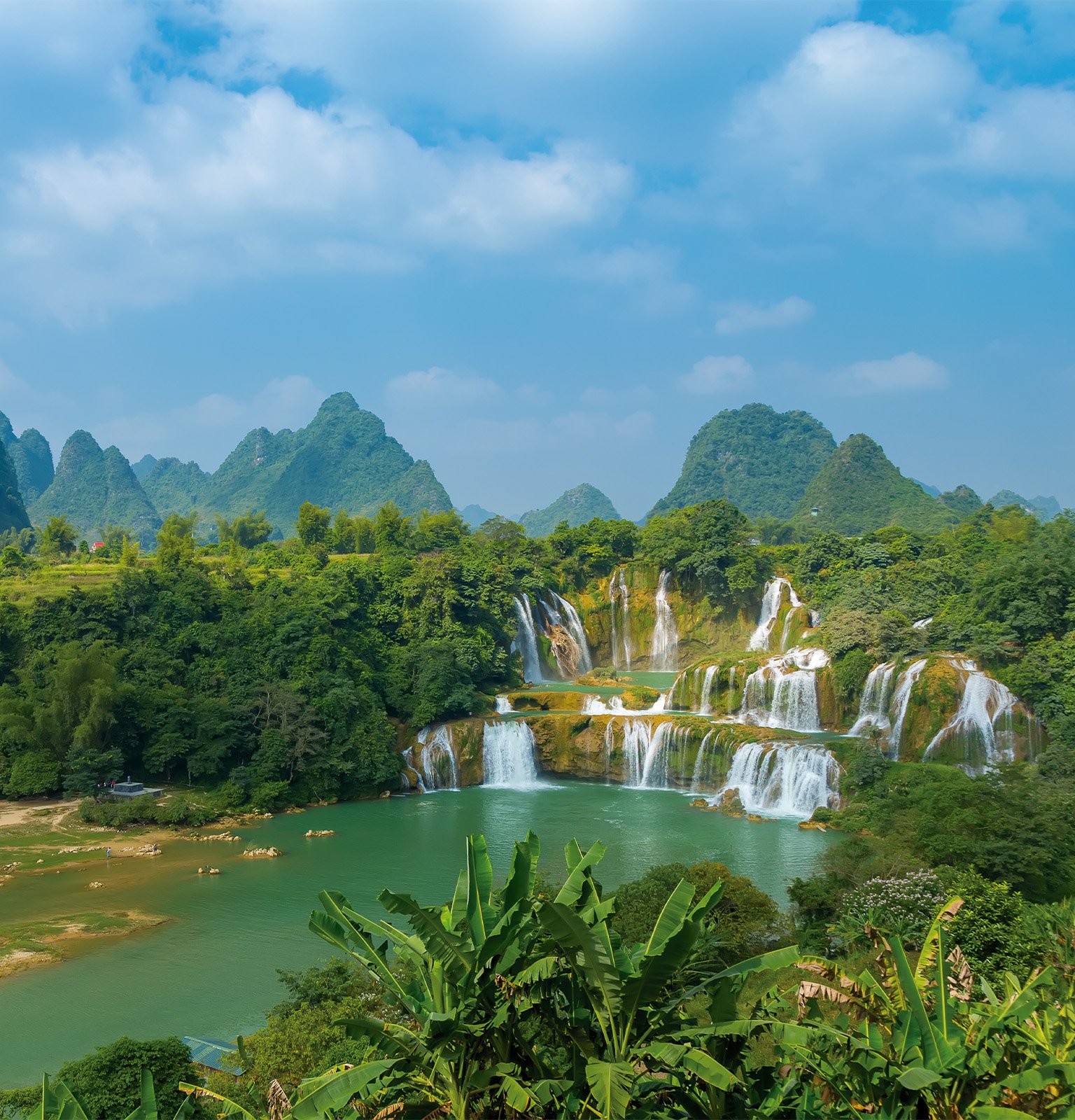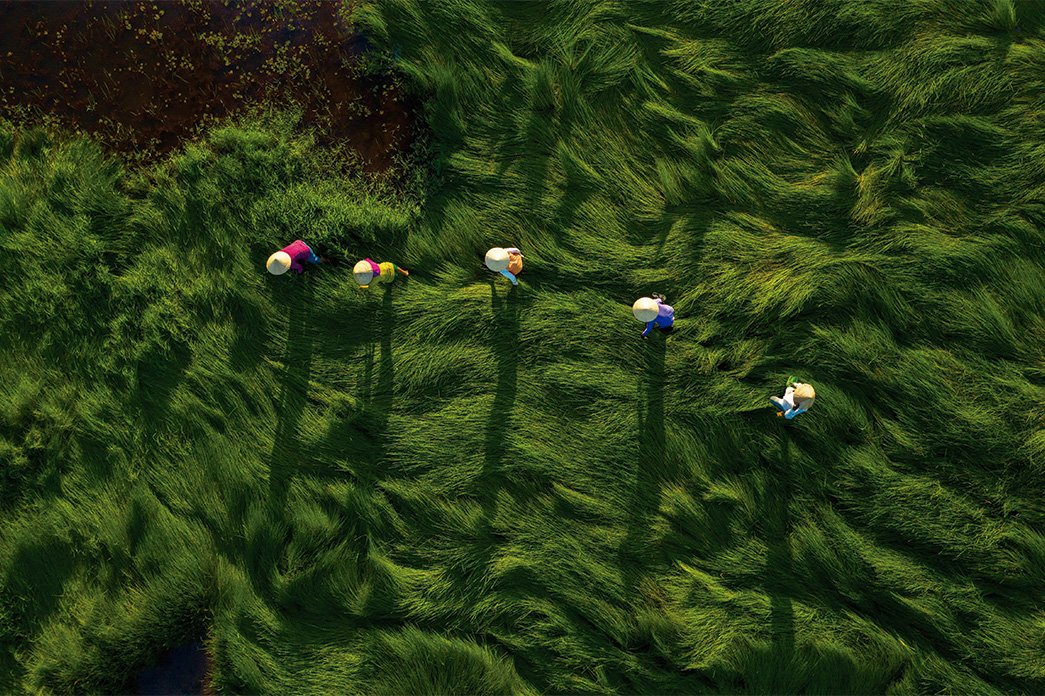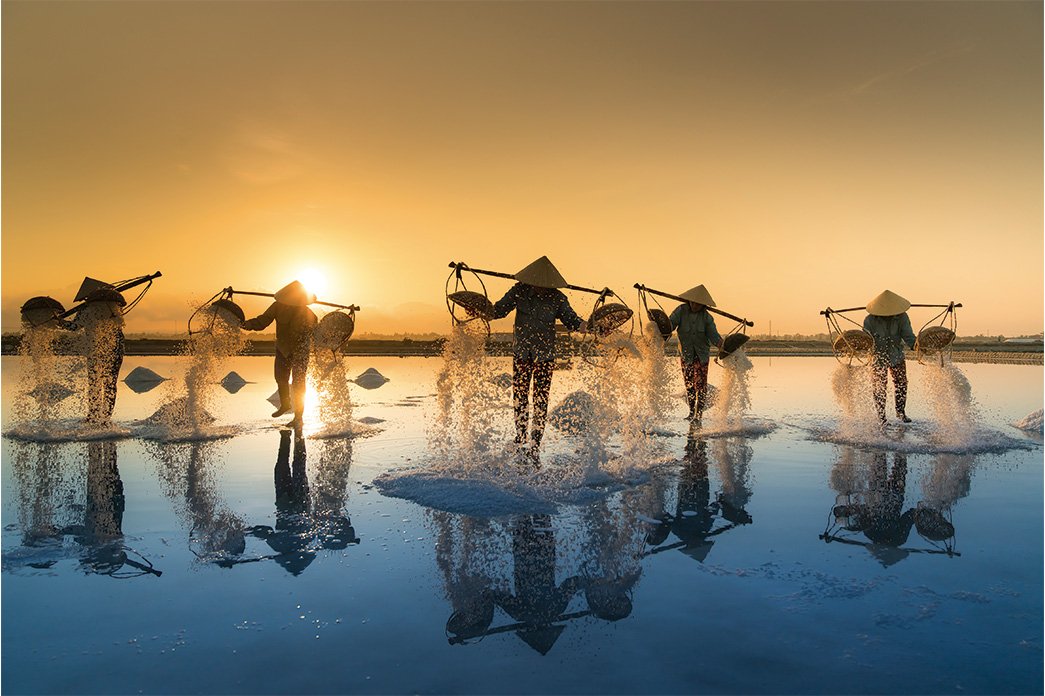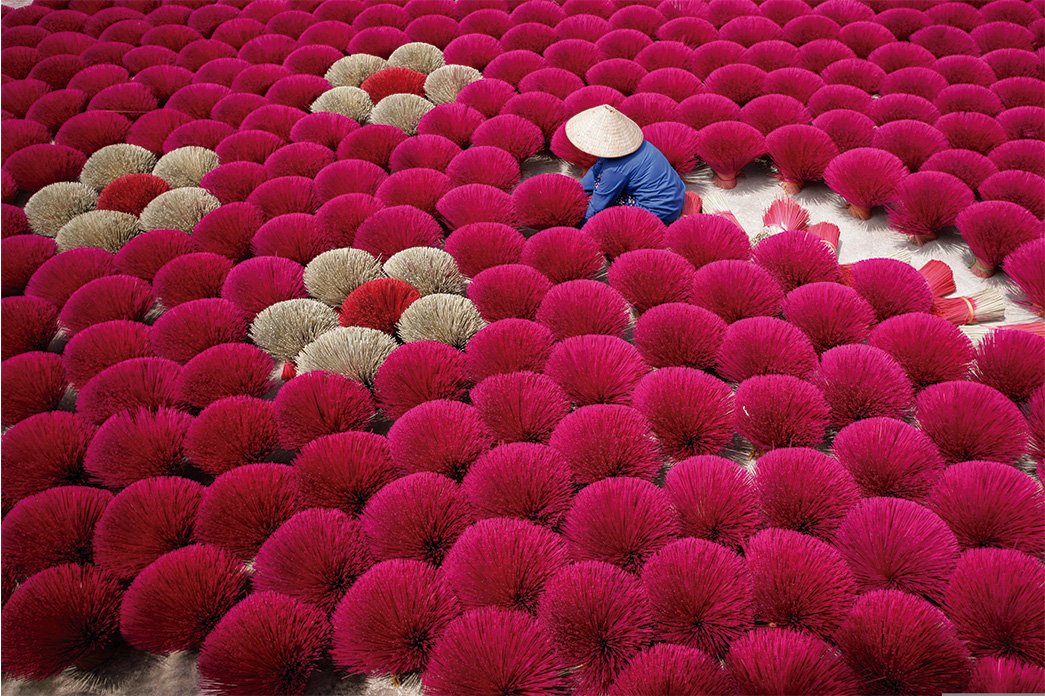
The holidays are approaching and both body and mind join forces to rest. It’s no longer winter and the sun is in no hurry to go to bed. It’s a time of swirling passions and states of madness, buoyed up by a desire to explore. Hand in hand with life, we head towards Southeast Asia, touching down in a country of rice fields in the north and idyllic beaches in the south. Its name, loaded with meaning, is Vietnam, but those who harvest and plant from the land recognise a diamond in the rough. Embark on a journey of discovery and sharing, and who knows, maybe it’s time for an emotional and spiritual journey.
Eight days (and seven nights) are planned to discover the most stunning peaks and valleys, the most exotic beaches and villages perched on the most unexpected places. But first of all, we need to gather some information about the destination. Culture shock can be lessened if you are well informed beforehand.
Getting to Vietnam takes an average of 17 hours and 30 minutes, which in the long run is worth it. There are no direct flights from Portugal, but many airlines offer tempting stopovers, so not everything is negative. With your feet on Asian soil, after a long trip, you will feel the first cultural impact with the official Vietnamese language. Fear not, as French is the second most widely spoken language, largely due to the French occupation of the country until 1946. It might be nice to pick up two or three words from the official language, which could lead to more harmonious moments – xin chào (hello); xin lỗi (sorry) and cảm ơn ông (thank you). Before we get you up to speed on the climate, you should know that the official currency is the Dong and that the exchange process is fairly easy. You can even do this on arrival at the airport, if you prefer. Another less obvious fact is tipping. In Vietnamese culture, tips have no value, so don’t feel obliged to give them. With its varied landscape and vast territory, the climate is diverse. From snow-capped mountain tops to 40 ºC southern beaches, it’s useful to keep an eye on the weather forecast. From May to October, the forecast is for hot and humid weather, except in areas protected by the mountains. When it comes to travelling around the country, there are great deal of alternatives. There is a varied choice of public transport, from buses and trains, to flights in the interior of the country. But let’s begin our trip, not forgetting the visa and the required documentation.
There are many UNESCO World Heritage Sites.
Eight days (and seven nights) are planned to discover the most stunning peaks and valleys, the most exotic beaches and villages perched on the most unexpected places. But first of all, we need to gather some information about the destination. Culture shock can be lessened if you are well informed beforehand.
Getting to Vietnam takes an average of 17 hours and 30 minutes, which in the long run is worth it. There are no direct flights from Portugal, but many airlines offer tempting stopovers, so not everything is negative. With your feet on Asian soil, after a long trip, you will feel the first cultural impact with the official Vietnamese language. Fear not, as French is the second most widely spoken language, largely due to the French occupation of the country until 1946. It might be nice to pick up two or three words from the official language, which could lead to more harmonious moments – xin chào (hello); xin lỗi (sorry) and cảm ơn ông (thank you). Before we get you up to speed on the climate, you should know that the official currency is the Dong and that the exchange process is fairly easy. You can even do this on arrival at the airport, if you prefer. Another less obvious fact is tipping. In Vietnamese culture, tips have no value, so don’t feel obliged to give them. With its varied landscape and vast territory, the climate is diverse. From snow-capped mountain tops to 40 ºC southern beaches, it’s useful to keep an eye on the weather forecast. From May to October, the forecast is for hot and humid weather, except in areas protected by the mountains. When it comes to travelling around the country, there are great deal of alternatives. There is a varied choice of public transport, from buses and trains, to flights in the interior of the country. But let’s begin our trip, not forgetting the visa and the required documentation.
There are many UNESCO World Heritage Sites.













